Long-read DNA sequencing for drug development
Our Oxford Nanopore long-read DNA sequencing enables precise mapping of vector integration sites and assessment of vector integrity, all performed in a regulatory-compliant environment.
Genomic analysis for cell and gene therapy development
Integration site analysis in CAR-T
Oxford Nanopore technology delivers ultra-long reads exceeding 4 Mb, capable of spanning complex structural variants and repetitive regions while enabling direct sequencing of native DNA without amplification. Long-read sequencing allows detailed characterization of the orientation, sequence integrity, and copy number of engineered chimeric antigen receptor (CAR) constructs integrated into T-cell genomes, providing comprehensive insight into integration events, regardless of their genomic location or context.
Plasmid and vector characterization
Long-read sequencing characterizes the complete plasmid, including the backbone, insert orientation, promoters, resistance genes, and repetitive regions without the need for vector-specific primers or primer walking. It also enables full-length quality control of viral vectors from ITR to ITR, ensuring accurate verification and confirmation that correct, error-free genomes are packed into capsids.
Epigenetics and methylation analysis
Oxford Nanopore technology detects base modifications at single-nucleotide resolution alongside nucleotide sequencing, preserving the methylation context over large genomic distances on individual strands. This enables the identification of differentially methylated regions (DMRs) and provides a comprehensive view of methylation patterns across complex genomic regions.
Regulatory-supportive workflows
Long-read DNA sequencing with Oxford Nanopore is performed in our regulated laboratory, where strict procedures for sample handling, redundancy systems, and data security are in place. Although these assays are not conducted under GLP/GCLP, the controlled environment ensures traceability, robustness, and reliable results across all analyses.
GLP and GCLP compliant laboratory
We are accredited for Good Laboratory Practice (GLP) by the Swedish Board for Accreditation and Conformity Assessment (SWEDAC) for qPCR, dPCR, and molecular biology. In addition, we are Good Clinical Laboratory Practice (GCLP) compliant to ensure the safe and reliable analysis of clinical samples.


Oxford Nanopore DNA sequencing is a long-read technology that generates continuous reads spanning thousands to even millions of bases. This enables direct assessment of vector integrity, detection of large structural variants, and precise mapping of integration sites in engineered cell products. Nanopore sequencing can also identify base modifications such as DNA methylation without additional sample preparation.
By contrast, short-read platforms like Illumina provide highly accurate, cost-efficient sequencing of shorter DNA fragments, making them ideal for applications requiring high depth, scalability, and sensitivity for small variants. While short-read sequencing excels at quantification and fine-resolution SNP/indel detection, long-read sequencing provides complementary insights into structural features, methylation, and full-length context.


